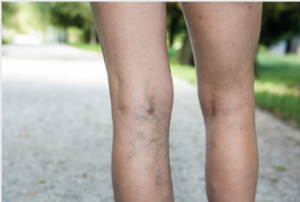Varicose vein treatment Adelaide: Varicose Vein Treatment and Prevention
Prevention and treatment for varicose veins are essential in relieving symptoms, improving appearance, and preventing serious complications like ulcers/sores/deep vein thrombosis/blood clots. Treatment usually begins with conservative measures like elevating legs, wearing compression stockings, and limiting long periods of sitting or standing.
 Doctors may use radiofrequency ablation for treating larger varicose veins. Varicose vein treatment and prevention Adelaide procedure involves inserting a catheter into the vein, then providing heat energy that causes it to collapse and seal shut.
Doctors may use radiofrequency ablation for treating larger varicose veins. Varicose vein treatment and prevention Adelaide procedure involves inserting a catheter into the vein, then providing heat energy that causes it to collapse and seal shut.
- Get Moving
Exercise can play an integral part in treating and preventing varicose veins. Regular physical activity – specifically walking and weight training – helps build muscles while increasing circulation in your legs, which will also assist with blood pressure management, which plays a key role in varicose vein formation.
Varicose veins occur when one-way valves in leg veins weaken and become damaged, allowing blood to pool within it and expand, stretching the walls out until they bulge or twist out of appearance. Standing for extended periods can further exacerbate this condition as this increases pressure within each vein and further exacerbates varicosities.
- Wear Compression Socks or Stockings
Many people living with varicose veins wear compression stockings to relieve their leg pain, swelling and feeling of heaviness. Although available without a valid medical prescription, compression stockings are considered a varicose vein treatment and prevention Adelaide that should still be selected carefully to address each person’s individual needs. Gradient stockings that tighten closer to the foot and gradually loosen towards the top can often be found at medical supply stores and medical supply shops.
Varicose veins form when damaged one-way valves allow blood to pool or flow in an inappropriate direction, leading to painful skin discolouration, ulcers that bleed, and increased risk for blood clots forming in your leg veins that could potentially travel all the way into your lungs (pulmonary embolism).
Varicose veins usually don’t lead to any long-term health concerns, but they can still be unsightly and uncomfortable. To minimize their effects, avoid standing or sitting for extended periods and losing or maintaining a healthy weight; smoking damages blood vessels and decreases circulation, while exercise such as walking can help ensure regular calf muscle contractions that ensure blood flows properly.
- Eat a Healthy Diet
Diet is one of the key aspects of varicose vein treatment and prevention, according to UChicago Medicine. A healthy diet should feature plenty of foods rich in vitamin E, which promotes blood flow while potentially preventing dangerous blood clots from forming in deep veins. Avocados, nuts (such as almonds, hazelnuts and peanuts), seeds and olive oil are excellent sources of this essential nutrient, as well as dark leafy greens such as spinach, arugula, kale, Swiss chard and collard greens for this important nutrient source!
Fibre can aid digestion and reduce bloating, both symptoms associated with varicose veins. To increase fibre intake, switch from white flour to whole wheat flour when possible and incorporate more fruits, vegetables, and grains into your diet. It is helpful in varicose vein treatment and prevention Adelaide.
Foods high in salt may aggravate varicose veins by increasing water retention and inflammation, making the bulging veins appear more prominent while itching and tightening of the skin can occur as a result.
- Avoid Excessive Sitting
Standing or sitting for extended periods can increase blood vessel pressure, putting strain on blood vessels and leading to swelling veins that, in turn, create painful varicose veins in the legs and ankles. Left untreated, these swollen veins could eventually lead to skin and tissue issues such as nonhealing sores and ulcers, which will require medical treatment to resolve.
Varicose veins can bleed, which is a sure sign of blood clot formation. If one breaks loose and travels into lung veins, it could potentially become life-threatening (pulmonary embolism).
- Massage Your Legs
Varicose veins often form as the result of weak valves in the legs. Over time, these valves may fail to stop blood from returning toward its source and pooling in superficial leg veins – eventually becoming twisted and enlarged and bulging under the surface of the skin, producing that iconic blue or purple hue associated with varicose veins.